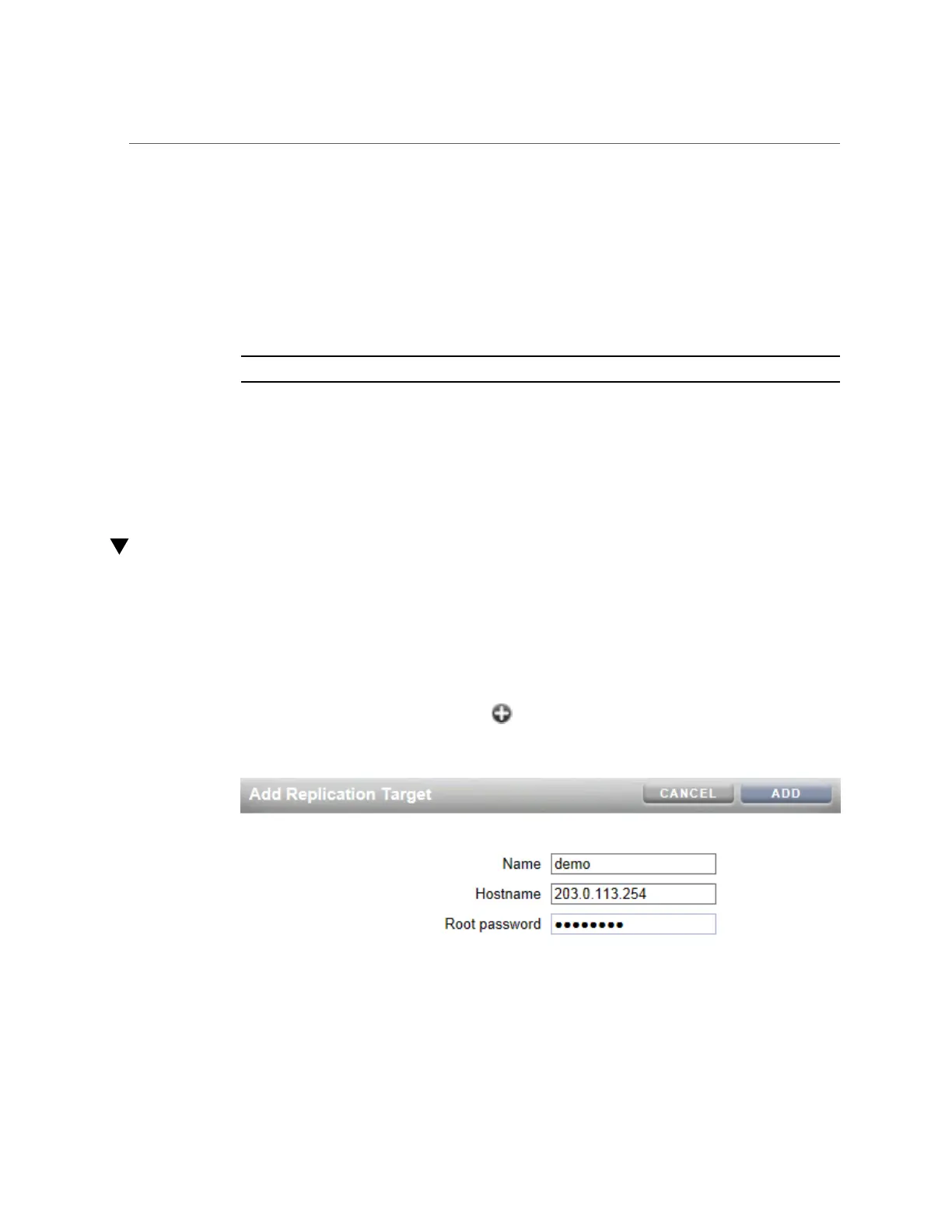Creating a Replication Target (BUI)
2.
After defining the static route from the source appliance to the target appliance,
repeat these steps on the target appliance to define the static route from the
target back to the source.
3.
To ensure traffic is routed through the correct source and target interfaces, use
the traceroute command.
For information about using traceroute, see “Configuring Network Routing” on page 85.
Note - When an interface is deleted, all routes associated with the interface are also removed.
Related Topics
■
“Example: Replication Configuration for Clustered Appliances” on page 535
■
“Remote Replication Workflow” on page 470
■
“Remote Replication Concepts” on page 526
Creating a Replication Target (BUI)
A replication target establishes a secure communication connection between source and target
appliances. To create a replication target:
1.
From the BUI of the source appliance, go to Configuration > Services > Remote
Replication.
2.
Next to Targets, click the add icon .
3.
Enter the following:
474 Oracle ZFS Storage Appliance Administration Guide, Release OS8.6.x • September 2016

